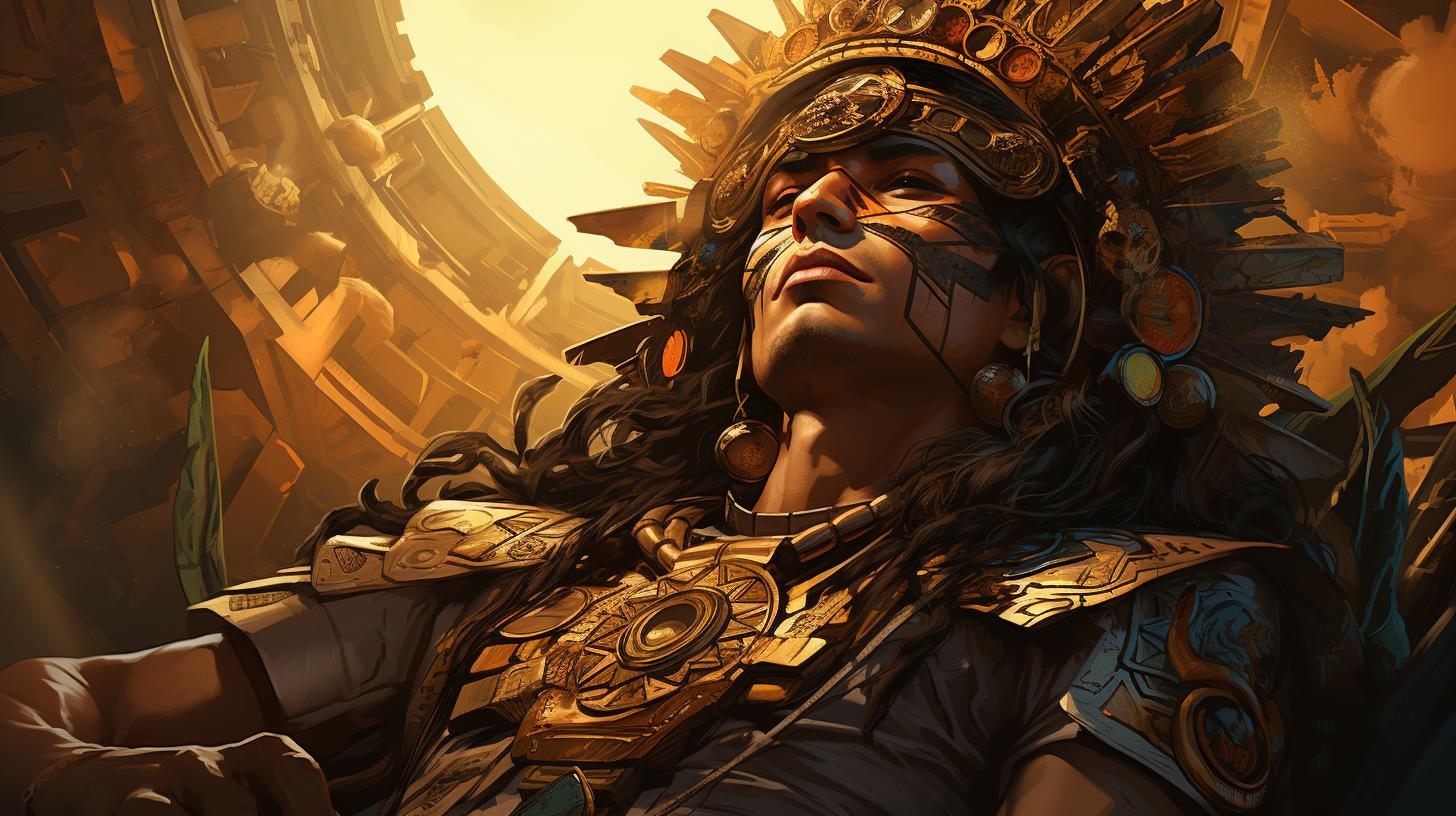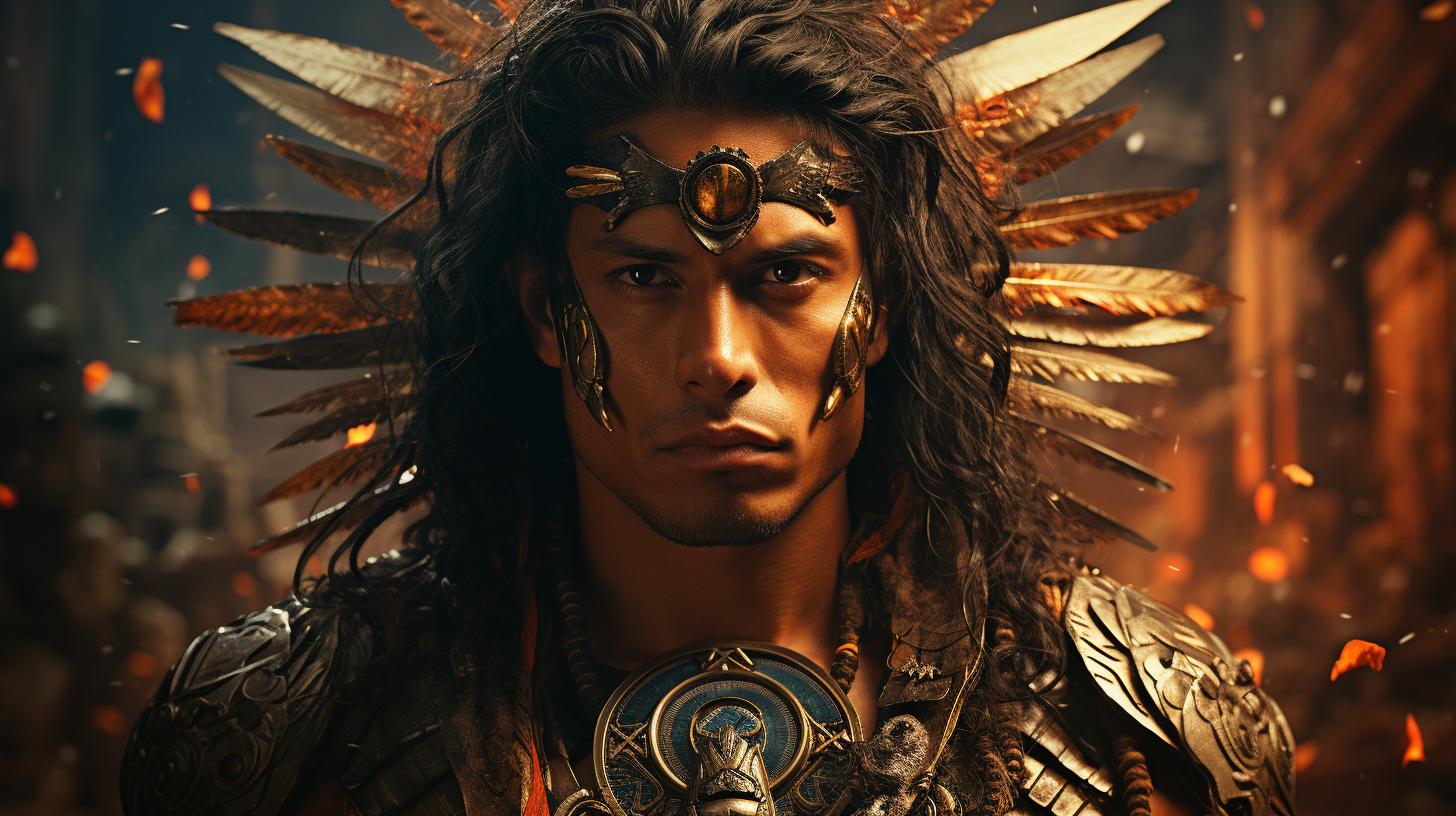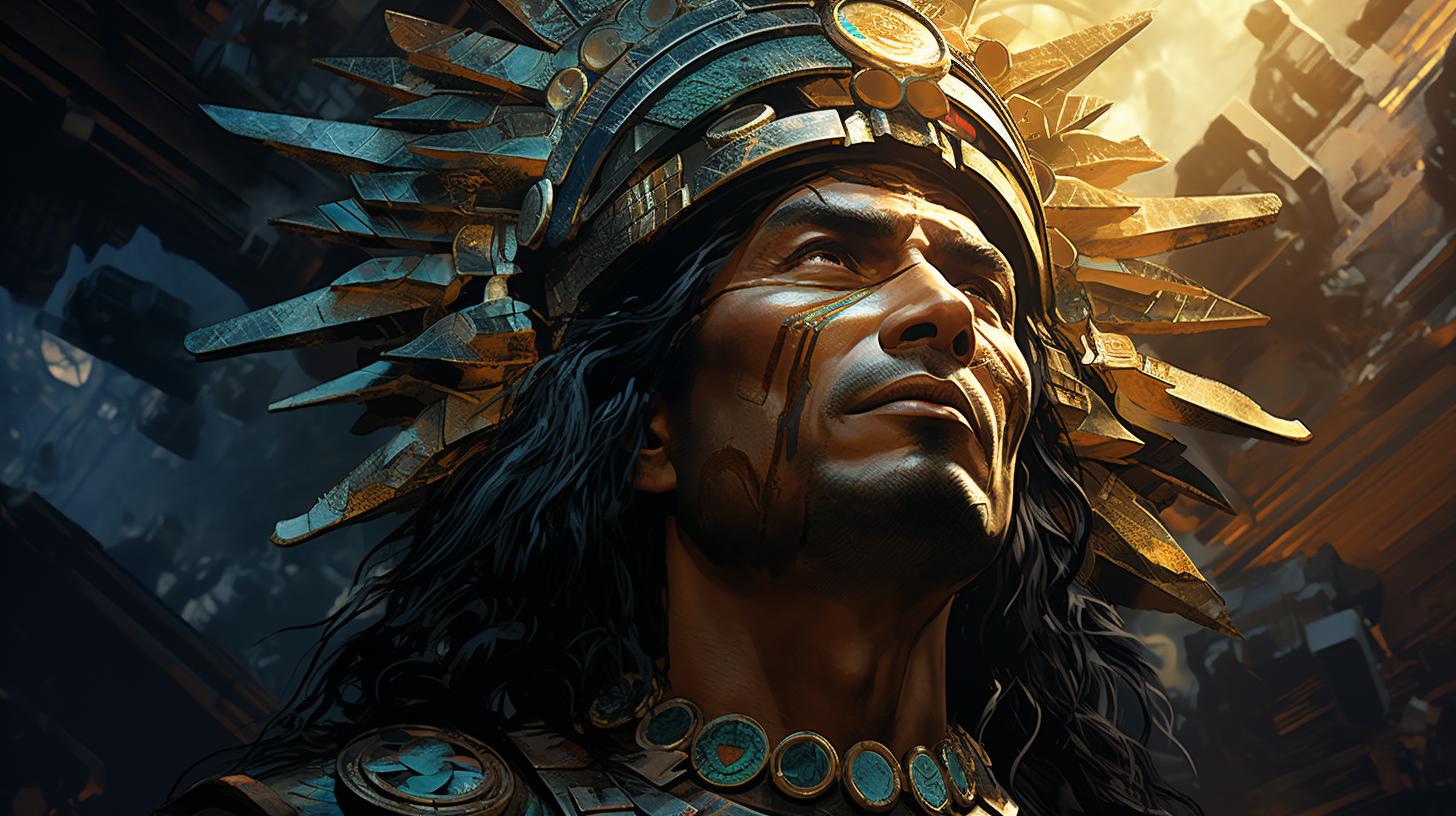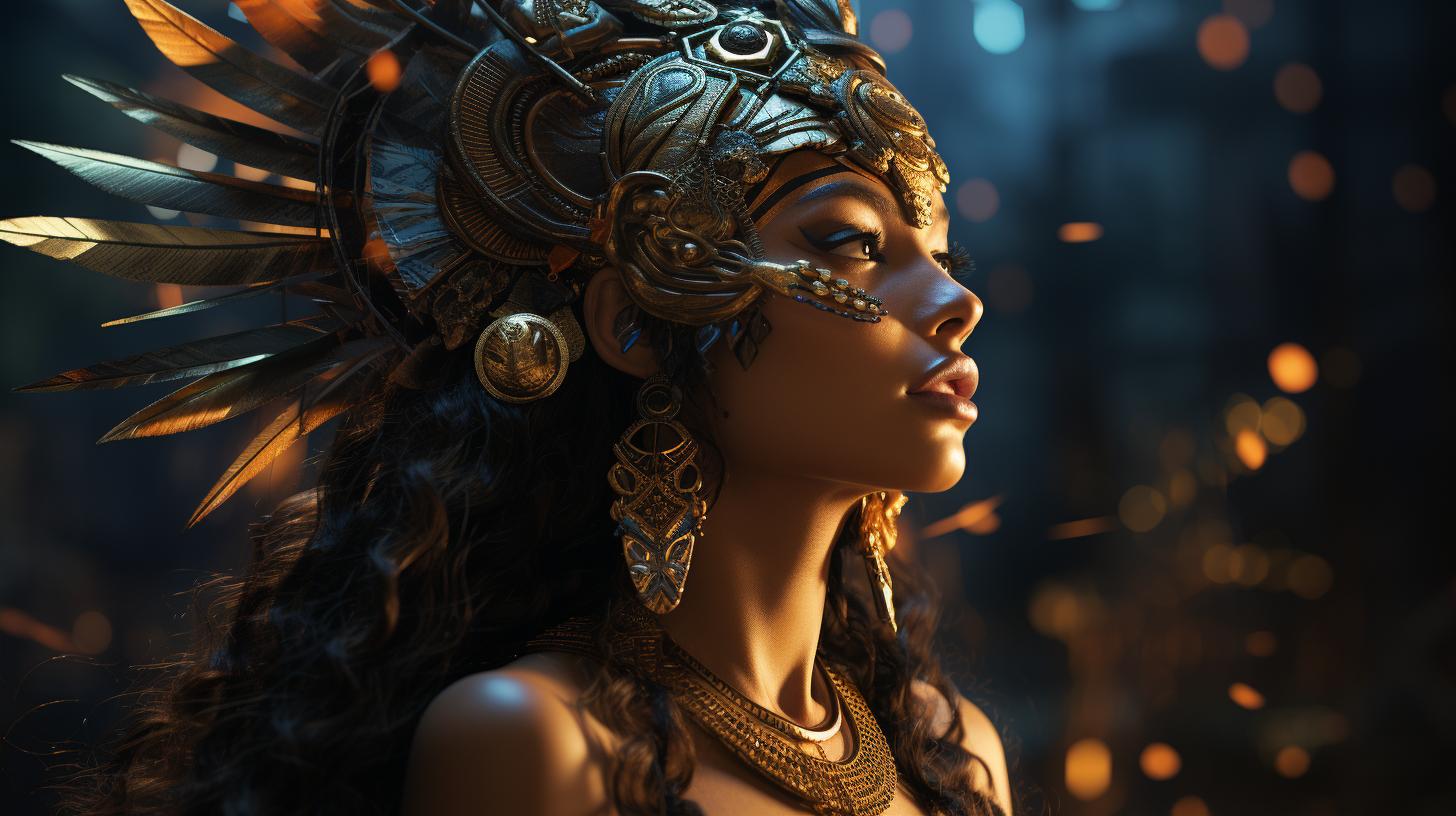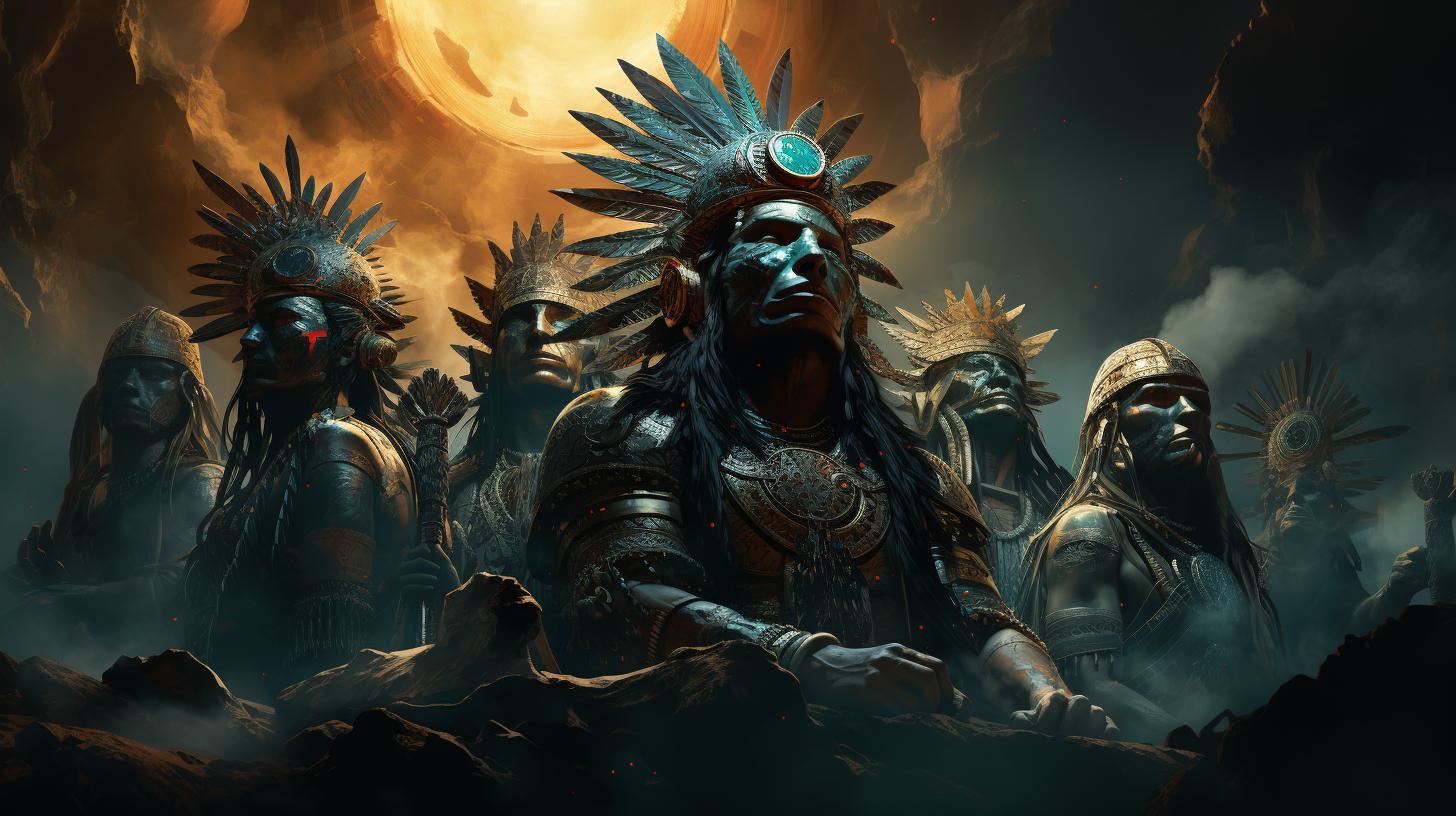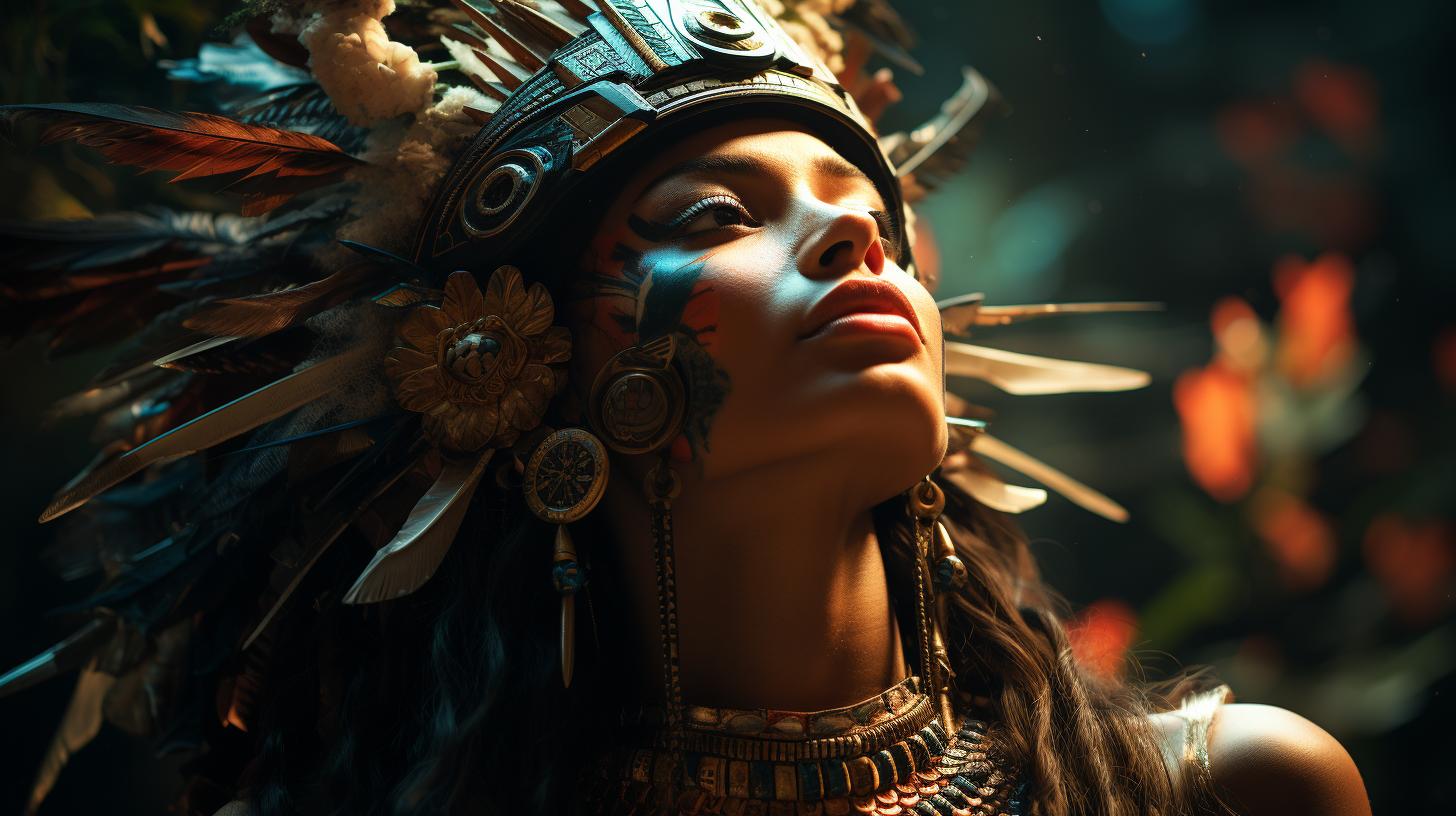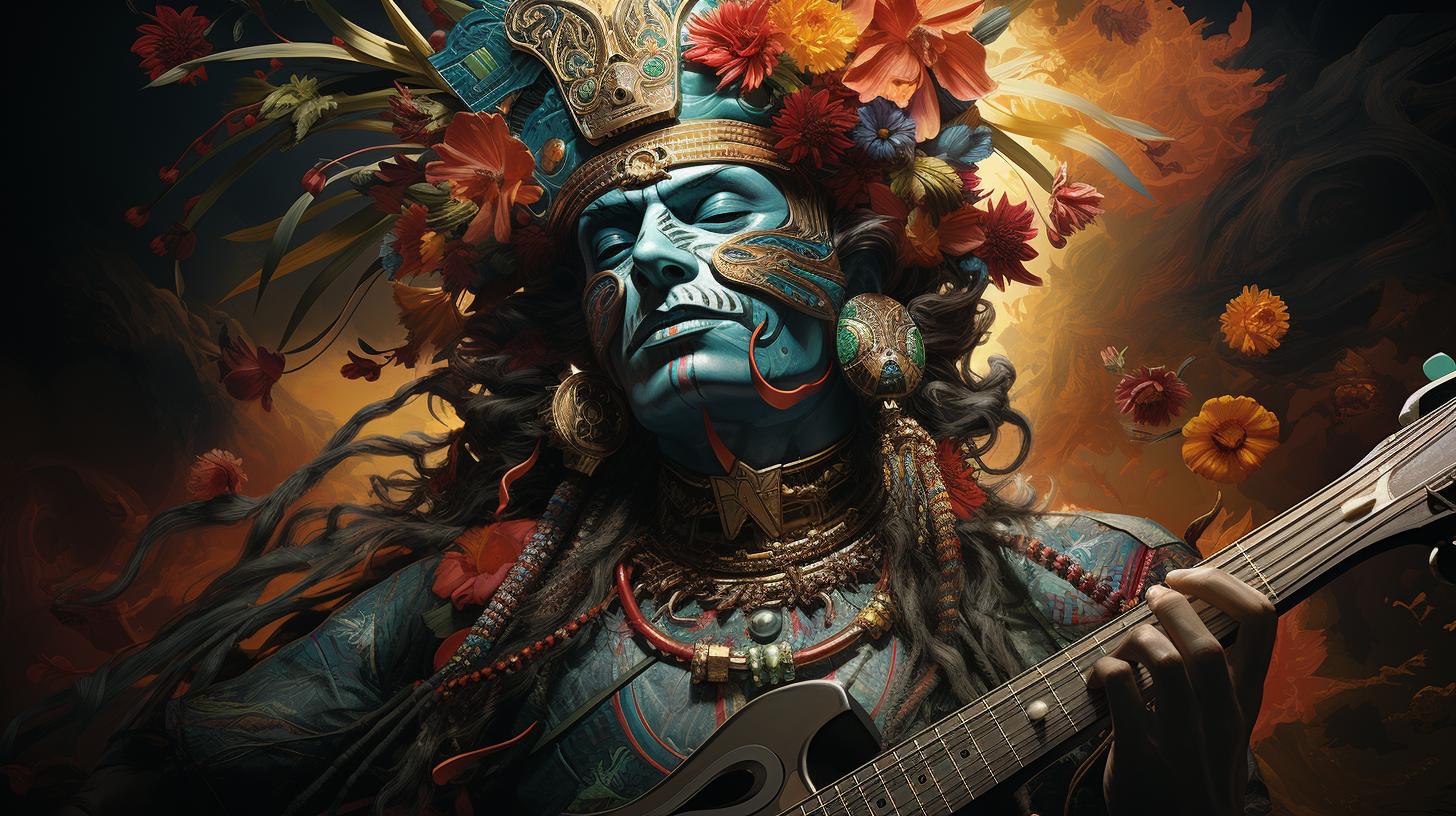Tonatiuh Aztec God: Exploring the Mythology and Symbolism of the Sun Deity

Tonatiuh Aztec god, a prominent figure in Mesoamerican mythology, was worshipped as the deity of the sun, fertility, and sacrifice. Tonatiuh’s association with the sun and his role as the patron of Aztec warriors made him a revered figure.
Represented as a colorful disc and associated with the eagle, Tonatiuh’s daily journey through the sky brought about the need for human sacrifices to ensure the continuity of the world. This article explores the history, symbolism, depictions, and beliefs surrounding Tonatiuh, as well as his role in the Aztec concept of sun eras.
Tonatiuh Aztec God
Tonatiuh, the Aztec god of the sun, holds a significant place in Mesoamerican mythology. Explore the rich history, symbolism, and worship associated with Tonatiuh.
History of Tonatiuh
The intricate history of Tonatiuh unveils his role as a vital deity in Aztec culture. Discover the tales and legends surrounding the sun god’s origin and significance in ancient times.
Meaning and Symbolism of Tonatiuh
The name Tonatiuh finds its roots in the Aztec word “tona,” which means to shine or emit rays.
Explore the profound symbolism behind Tonatiuh’s association with the sun, fertility, and its connection to the warrior culture of the Aztecs.
Worship and Beliefs Associated with Tonatiuh
Dive into the beliefs and rituals dedicated to Tonatiuh. Learn about the patronage of Aztec warriors and the religious practices, including sacrifices, performed to honor and appease the sun god.
Aztec Sun God Depictions
Artistic representations of Tonatiuh, the Aztec sun god, provide insight into the significance and symbolism attributed to him in Aztec culture.
Artistic Representations of Tonatiuh
Tonatiuh is often depicted as a vibrant and colorful disc, representing the powerful and radiant sun. Artists utilized bright hues, such as gold and red, to emphasize his association with warmth, light, and life.
The use of intricate geometric patterns in these depictions illustrates the divine nature of Tonatiuh and his role in the celestial realm.
The Aztec Sun Stone
One of the most iconic representations of Tonatiuh is found in the Aztec Sun Stone, also known as the Calendar Stone. This massive stone carving intricately depicts Tonatiuh at its center, surrounded by various celestial and religious symbols.
The Sun Stone not only illustrated the solar deity’s pivotal role but also served as a complex calendar, providing insights into the Aztec perception of time and cosmic cycles.
The Aztec Calendar and Tonatiuh
Tonatiuh’s connection to the Aztec calendar further highlights his significance in Aztec society.
The calendar, known as the tonalpohualli, represented the sacred divinatory cycle of 260 days. Tonatiuh occupied the 20th day-sign in this calendar, symbolizing rebirth and renewal. The Aztecs believed that Tonatiuh’s daily journey across the sky was a cyclical representation of life and death, highlighting the constant cycle of creation.
The artistic representations of Tonatiuh, the Aztec Sun God, provide a glimpse into the rich symbolism and cultural importance attributed to him in Aztec society. Through vibrant depictions, such as the Aztec Sun Stone, and his association with the sacred calendar, Tonatiuh’s role as the powerful sun deity is vividly conveyed.
Tonatiuh and Human Sacrifice
Human sacrifice played a crucial role in the religious practices of the Aztecs, and Tonatiuh, as the sun god, held a central position in these rituals. The Aztecs believed that blood and hearts were necessary to sustain Tonatiuh’s vital energy, ensuring the continuous movement of the sun and the balance of the world.
Role of Sacrifice in Aztec Religion
In Aztec religion, sacrifice was seen as a sacred duty and a means to communicate with the deities. It was believed that the gods sacrificed themselves to create Tonatiuh and maintain the cycle of life and death.
Human sacrifice, in particular, was considered a high honor, as the victims were believed to be messengers to the gods.
Human Sacrifices to Tonatiuh
The sacrifices dedicated to Tonatiuh were often prisoners of war, chosen specifically for their physical prowess and bravery. These captives were regarded as offerings to Tonatiuh, providing him with the strength and energy needed for his daily journey across the sky.
The heart extraction ritual, known as the “Feathered Serpent Sacrifice,” was the most common form of sacrifice to Tonatiuh.
Rituals and Ceremonies Dedicated to Tonatiuh
- Sunrise Ceremonies: At dawn, priests conducted ceremonies to honor Tonatiuh’s daily rebirth, invoking his blessings and seeking his protection for the Aztec people.
- Warrior Rituals: Warriors played a significant role in the worship of Tonatiuh, as they were considered the “men of the sun.”
They would participate in sacred battles known as “Flower Wars” to capture prisoners for sacrificial offerings.
- Great Festivals: The Aztecs celebrated major festivals dedicated to Tonatiuh, such as the Feast of the New Fire, where a new sacred fire was ignited to mark the beginning of a new 52-year cycle.
These rituals and ceremonies served to honor Tonatiuh, ensure the sun’s continuous journey, and maintain the order and balance of the Aztec world.
The Aztecs believed that their offerings and devotion to Tonatiuh were necessary for the prosperity and survival of their civilization.
Tonatiuh and the Fifth Sun Era
According to Aztec mythology, the world has gone through four previous eras, each governed by a different deity. Tonatiuh, the Aztec god of the sun, rules over the fifth and current era, known as the Fifth Sun.
This era is characterized by the belief that its inhabitants are corn eaters. However, the Aztecs also believed that the world would meet a violent end through an impending earthquake.
The Aztec Mythology of Sun Eras
The Aztecs held a complex belief system regarding the succession of sun eras.
Each era was associated with a different deity and brought its own unique challenges and characteristics. The first era was governed by Tezcatlipoca, followed by Quetzalcóatl in the second era, Tláloc in the third era, and Chalchiuhtlicue in the fourth era.
Tonatiuh emerged as the ruler of the fifth era, symbolizing the intense power and energy of the sun.
Tonatiuh as the Ruler of the Fifth Sun
Tonatiuh occupies a central role in the Fifth Sun as the deity presiding over this present era. The Aztecs recognized his connection to the sun’s constant cycle of birth and death, which occurs every day at sunrise and sunset.
Tonatiuh’s journey through the sky represented the perpetual movement necessary to uphold the world’s balance and sustain life.
Beliefs and Prophecies of the Fifth Sun
In addition to ruling over the current era, Tonatiuh’s reign is intertwined with prophecies and beliefs surrounding the Fifth Sun. The Aztecs believed that for the world to continue existing, regular sacrifices were imperative.
Sacrifices were offered to Tonatiuh to ensure the alternation between day and night as well as the transition between rainy and dry seasons – crucial for the maintenance of cosmic harmony.
The belief in Tonatiuh as the ruler of the Fifth Sun era underscores the Aztecs’ deep understanding of the cyclical nature of the universe and the delicate balance between life, death, and the natural elements.
The rituals and ceremonies dedicated to Tonatiuh reflected their commitment to preserving the continuity and prosperity of their civilization in this turbulent era.
.











